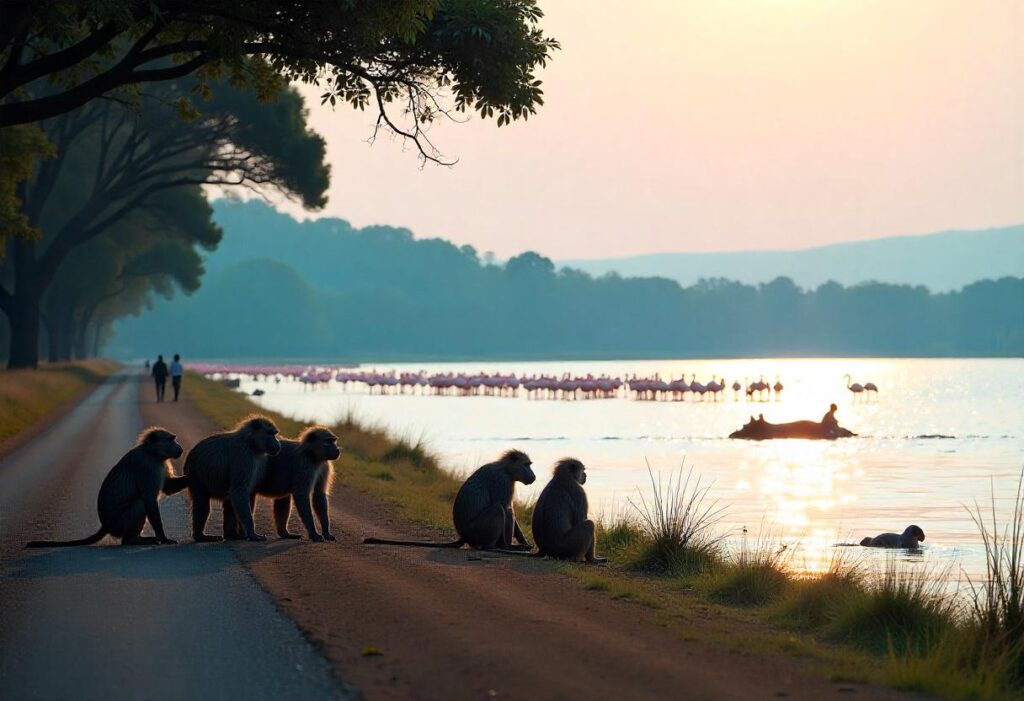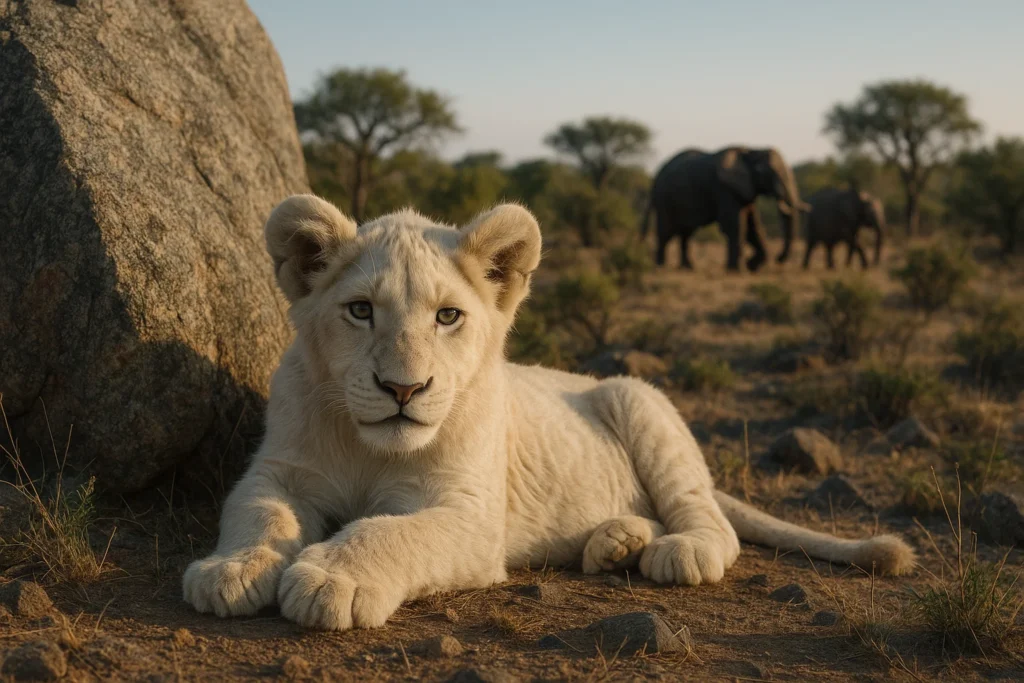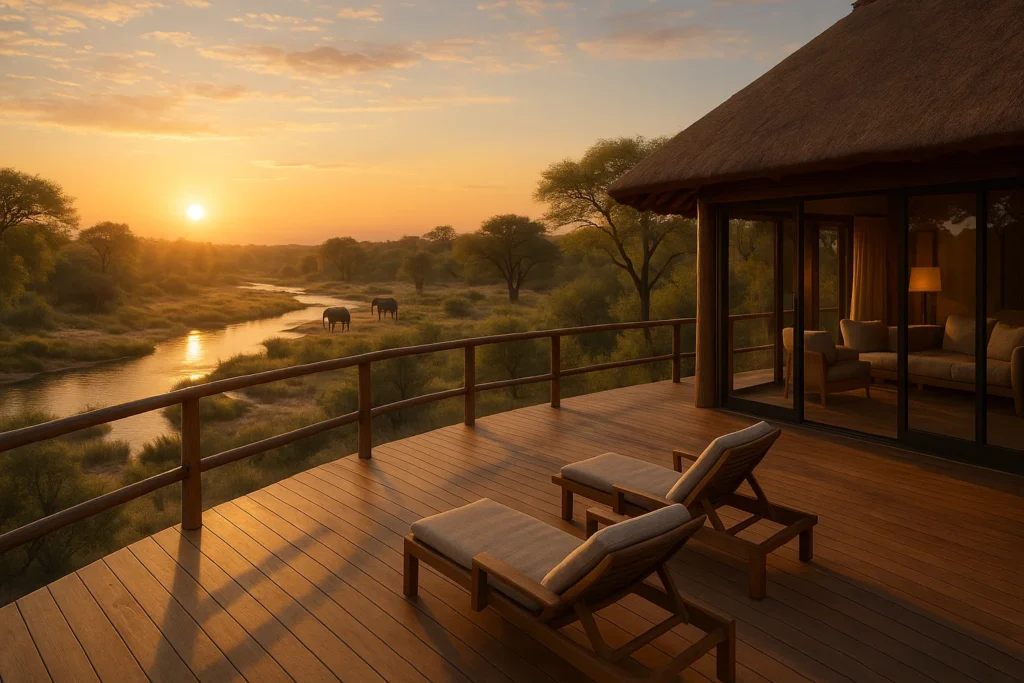Lake Manyara National Park may not boast the endless plains of the Serengeti or the dramatic crater walls of Ngorongoro, but it offers something just as special: rare species, unique animal behaviors, and one of the most biodiverse ecosystems in East Africa. For travelers willing to look beyond the Big Five, a safari in Lake Manyara reveals a treasure trove of unexpected encounters.
A birdwatcher’s dream come true
Lake Manyara is home to over 400 species of birds, making it one of Tanzania’s top birding destinations. From the vivid pink hues of flamingos lining the shallow alkaline lake to the elusive silvery-cheeked hornbills in the forest canopy, the variety is staggering.
Birds to look out for:
- Flamingos (in season)
- African fish eagles
- Great white pelicans
- Yellow-billed storks
- Crowned eagles
Whether you’re a seasoned birder or simply enjoy the occasional sighting, the park’s wetlands, forests, and lake margins offer rewarding moments year-round.
Hippos lounging in the lake
Lake Manyara’s name is almost synonymous with hippos. One of the best places to see these massive creatures is at the park’s dedicated hippo pools, where they wallow in the water to keep cool. The raised viewing platforms allow for safe and close-up encounters.
Monkey business: blue monkeys and black-and-white colobus
The groundwater forest near the park entrance is alive with movement—and much of it comes from primates. Lake Manyara is one of the few parks in northern Tanzania where visitors can easily spot:
- Blue monkeys: playful and curious, often seen in family groups.
- Black-and-white colobus monkeys: elusive and elegant, gliding through the trees with their bushy white tails.
These species, often overlooked in Big Five safaris, are a delight to watch in their natural habitat.
The mystery of the tree-climbing lions
While tree-climbing lions are sometimes spotted in other parks, Lake Manyara is one of the few places where this behavior is relatively common. No one knows exactly why the lions here regularly lounge on tree limbs—some say it’s to escape insects, others think it’s a response to wet ground conditions. Either way, catching sight of a lion perched high above ground is a rare and unforgettable experience.
Baboons in record numbers
Lake Manyara is also famous for its large troops of olive baboons, often numbering in the hundreds. These intelligent and highly social animals offer fascinating behavior—grooming, parenting, foraging—often right next to the road. Their presence gives Manyara a raw, immersive quality that’s hard to find elsewhere.
When to visit for the best sightings
Dry season (June to October)
- Easier wildlife viewing as animals gather around water.
- Better chances of seeing lions and large mammals.
Wet season (November to May)
- Peak birdwatching season.
- Forest and lake areas are lush and photogenic.
- Fewer tourists, more intimate experiences.
Conclusion
If you’re planning a safari in northern Tanzania, don’t overlook Lake Manyara. This compact park offers a completely different rhythm of wildlife viewing—slower, subtler, and often more surprising. From baboons in huge troops to tree-climbing lions and rare forest monkeys, the hidden wildlife gems of Lake Manyara make it well worth a stop on your safari circuit.
FAQs
Yes—Lake Manyara offers unique experiences like tree-climbing lions, massive baboon troops, and exceptional birdwatching that aren’t as common in the larger parks.
Lake Manyara is home to over 400 species including flamingos, pelicans, hornbills, and eagles—making it a premier birding destination in Tanzania.
While sightings are not guaranteed, Lake Manyara is one of the best places in Africa to observe this unusual lion behavior.
The dry season (June to October) is ideal for mammals, while the wet season (November to May) is best for birds and lush scenery.
Yes, it’s just under 2 hours from Arusha by road and makes for an excellent day trip or first stop on a northern circuit safari.






